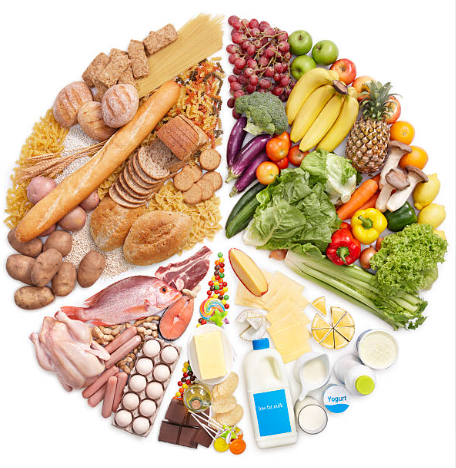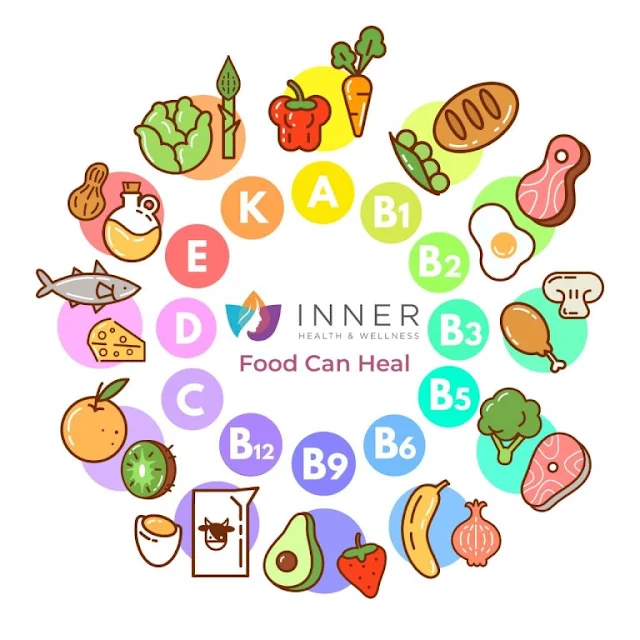Tips for Choosing Healthy Foods
We all know that a healthy diet is important for our overall well-being, but sometimes it can be difficult to navigate the grocery store and choose the healthiest options. With so many products and brands available, it's easy to get overwhelmed and confused. However, with a little bit of knowledge and some tips for reading labels and identifying healthy options, you can easily make informed choices that will benefit your health. In this post, we will provide you with some useful tips for navigating the grocery aisles and choosing healthy foods for yourself and your family.
We will cover everything from reading nutrition labels to understanding food claims, and provide you with some simple strategies for making healthy choices that fit your lifestyle and budget. So get ready to hit the grocery store armed with the knowledge you need to make wise food choices.
Importance of Making Healthy Food Choices
Making healthy food choices is crucial for maintaining overall well-being and vitality. The food we consume serves as fuel for our bodies, impacting not only our physical health but also our mental clarity and emotional well-being. A balanced diet rich in nutrients is essential for supporting our immune system, promoting proper digestion, and providing the energy needed to carry out daily activities.
By opting for nutritious foods, we can reduce the risk of developing chronic diseases such as heart disease, diabetes, and obesity. Choosing whole foods like fruits, vegetables, whole grains, lean proteins, and healthy fats can provide essential vitamins, minerals, and antioxidants that support optimal health.
Moreover, making healthy food choices can positively impact our mood and cognitive function. Foods rich in omega-3 fatty acids, for instance, are known to support brain health and may help reduce the risk of depression and anxiety.
Overall, prioritizing healthy food choices is an investment in our long-term health and well-being. By being mindful of what we put into our bodies and making informed decisions at the grocery store, we can nourish ourselves from the inside out and pave the way for a healthier, happier life.
Understanding Food Labels and Ingredients
Understanding food labels and ingredients is crucial when it comes to making healthy choices at the grocery store. With so many products lining the shelves, it can be overwhelming to decipher which items are truly good for you. By taking the time to read and understand food labels, you can make informed decisions that align with your health goals.
One key aspect of food labels to pay attention to is the ingredient list. Ingredients are listed in descending order by weight, so the first few ingredients are the most prominent in the product. Look out for artificial additives, preservatives, and excessive amounts of sugar or unhealthy fats. Opt for products with simple, whole food ingredients that you recognize and can pronounce.
Additionally, be mindful of serving sizes and the nutritional information provided on food labels. Pay attention to the amount of calories, fat, sugar, protein, fiber, and other nutrients in a serving of the product. Compare different brands and varieties to choose options that are lower in unhealthy components and higher in beneficial nutrients.
By understanding food labels and ingredients, you can navigate the grocery aisles with confidence, making choices that support your health and well-being. Take the time to educate yourself on how to interpret food labels, and you'll be better equipped to select nutritious foods for you and your family.
Tips for Shopping the Perimeter of the Store
When it comes to choosing healthy foods while grocery shopping, one effective strategy is to focus on shopping the perimeter of the store. This is where you'll typically find fresh produce, meats, dairy, and other whole foods, while the inner aisles tend to house processed and packaged items.
By starting your grocery trip by navigating the perimeter, you can fill your cart with nutrient-dense options like colorful fruits and vegetables, lean proteins, and dairy products. These whole foods are often less processed and contain fewer additives and preservatives compared to items found in the center aisles.
Additionally, shopping the perimeter can help you make healthier choices and avoid the temptation of less nutritious snacks and sugary treats that are prominently displayed in the inner aisles. By focusing on whole, fresh foods, you can create a well-balanced and wholesome shopping list that supports your overall health and well-being.
Choosing Fresh Produce and Seasonal Options
When navigating the grocery aisles with the goal of choosing healthy foods, focusing on fresh produce and seasonal options is key. Opting for fresh fruits and vegetables not only ensures that you are getting a variety of essential vitamins and minerals but also supports local farmers and promotes sustainability.
Seasonal produce tends to be more flavorful and nutrient-dense as it is harvested at its peak ripeness. Additionally, purchasing in-season fruits and vegetables can often be more cost-effective compared to out-of-season options that may have been imported from afar.
To make the most of your grocery shopping experience, take the time to explore the abundance of fresh produce available in your area. Look for vibrant colors, firm textures, and fragrant aromas when selecting fruits and vegetables. Incorporating a diverse range of fresh produce into your meals can enhance the nutritional value of your diet and add a burst of flavor to your dishes.
By choosing fresh produce and seasonal options, you are not only making a healthier choice for yourself but also supporting local agriculture and embracing the natural rhythms of the changing seasons. Let the colors and flavors of the produce aisle inspire you to create delicious and nutritious meals that nourish both your body and soul.
Incorporating Whole Grains and Fiber into Your Diet
Whole grains and fiber play a crucial role in maintaining a healthy and balanced diet. When navigating the grocery aisles, it's important to prioritize foods that are rich in whole grains and fiber. Whole grains are packed with essential nutrients like fiber, vitamins, and minerals that are beneficial for overall health.
Incorporating whole grains into your diet can be as simple as choosing whole grain bread, pasta, rice, and cereals over their refined counterparts. Look for labels that specify "whole grain" or "whole wheat" as the first ingredient to ensure you're getting the maximum nutritional benefits.
Fiber is another key component of a healthy diet, known for promoting digestive health and reducing the risk of chronic diseases. Foods high in fiber include fruits, vegetables, legumes, nuts, and seeds. Aim to include a variety of fiber-rich foods in your meals to support digestion and overall well-being.
By making conscious choices to incorporate whole grains and fiber into your diet, you can enhance your nutritional intake and support a healthier lifestyle. Next time you're at the grocery store, remember to stock up on whole grain and fiber-rich foods to nourish your body from within.
Selecting Lean Proteins and Plant-Based Alternatives
When it comes to selecting lean proteins and plant-based alternatives, it's essential to prioritize quality and nutrition. Lean proteins are a crucial part of a healthy diet, providing essential nutrients while being low in saturated fats. Opt for lean cuts of poultry, such as skinless chicken or turkey, and lean cuts of beef or pork. Seafood, such as salmon, tuna, or shrimp, are also excellent sources of lean protein packed with omega-3 fatty acids.
For those looking for plant-based alternatives, there are plenty of options available that offer protein-rich sources without the saturated fats found in some animal products. Legumes like beans, lentils, and chickpeas are excellent choices, providing fiber and protein. Tofu, tempeh, and edamame are also great plant-based protein sources that can be incorporated into various dishes.
When selecting lean proteins and plant-based alternatives, it's also important to consider how they are prepared. Opt for grilling, baking, or steaming methods instead of frying to keep the dish healthy and nutritious. By choosing quality lean proteins and plant-based alternatives, you can create delicious and satisfying meals that support your overall health and well-being.
Navigating the Snack Aisles Wisely
When it comes to navigating the snack aisles in grocery stores, it's easy to feel overwhelmed by the plethora of options available. However, with a few simple tips, you can make healthier choices that will satisfy your snack cravings without compromising your health.
One key tip is to opt for whole food snacks whenever possible. Instead of reaching for highly processed snacks that are filled with artificial ingredients and preservatives, choose snacks that are made with real, whole ingredients like fruits, nuts, seeds, and whole grains. These snacks are not only more nutritious but also more filling and satisfying in the long run.
Another tip is to pay attention to the ingredients list and nutritional information on snack packaging. Look for snacks that are low in added sugars, sodium, and unhealthy fats. Choose snacks that are high in fiber, protein, and healthy fats to keep you feeling full and energized.
Lastly, portion control is key when it comes to snacking. Instead of mindlessly munching on snacks straight from the bag, portion out your snacks into smaller containers or bags to help you avoid overeating. This can also help you become more mindful of your snacking habits and prevent you from consuming excess calories.
By following these tips and making conscious choices in the snack aisles, you can enjoy tasty snacks that nourish your body and support your overall health and well-being.
Avoiding Sugary and Processed Foods
When it comes to navigating the grocery aisles and choosing healthy foods, one of the key tips is to steer clear of sugary and processed foods. These items are often laden with added sugars, unhealthy fats, and artificial ingredients that can have a detrimental impact on your health.
Instead, focus on selecting whole foods that are as close to their natural state as possible. Opt for fresh fruits and vegetables, lean proteins, whole grains, and healthy fats such as nuts and seeds. By avoiding sugary and processed foods, you can help to reduce your intake of empty calories and unhealthy additives, while also ensuring that you are fueling your body with the nutrients it needs to thrive.
When shopping, be sure to check the labels of packaged foods for hidden sugars and artificial ingredients. Look for products with minimal added sugars and ingredients that you can pronounce. Additionally, try to limit your intake of sugary beverages such as soda and energy drinks, opting instead for water, herbal tea, or natural fruit juices.
Meal Planning and Preparing for Grocery Shopping
Meal planning and preparing before heading to the grocery store can save you time, money, and ensure that you make healthier choices. By taking the time to plan your meals for the week, you can create a shopping list that includes all the ingredients you need, reducing the chances of impulse buys and helping you stick to a healthier eating plan.
Start by choosing recipes that are nutritious and balanced, incorporating a variety of fruits, vegetables, whole grains, lean proteins, and healthy fats. Once you have your recipes selected, make a detailed list of the ingredients required for each meal. Check your pantry and fridge to see what you already have on hand to avoid buying duplicates.
Consider batch cooking or preparing ingredients in advance to streamline meal prep during the week. Chop vegetables, cook grains, and marinate proteins ahead of time to make cooking quicker and easier on busy days. Having prepped ingredients on hand can also prevent last-minute takeout or unhealthy convenience meals.
By meal planning and preparing before grocery shopping, you can make healthier choices, save time during the week, and reduce food waste. It's a simple yet effective strategy for navigating the grocery aisles with a focus on choosing nutritious foods for you and your family.
Making Healthy Choices on a Budget
Making healthy choices on a budget is a common concern for many shoppers trying to prioritize their health and well-being without breaking the bank. Fortunately, there are several strategies you can implement to ensure that you are making nutritious choices without overspending.
One effective tip is to plan your meals in advance and create a shopping list based on these meal plans. This helps you avoid impulse purchases and ensures that you only buy the items you need. Additionally, consider buying in bulk for staple items such as rice, beans, and oats, which can often be more cost-effective in larger quantities.
Another way to make healthy choices on a budget is to prioritize whole foods over processed foods. Whole foods like fruits, vegetables, whole grains, and lean proteins are not only nutritious but can also be more affordable than pre-packaged or convenience foods. Look for sales and discounts on fresh produce and consider visiting local farmers' markets for seasonal and budget-friendly options.
Furthermore, compare prices between different brands and consider generic or store-brand options, which are often more affordable than name brands without compromising on quality. Lastly, don't forget to utilize coupons, loyalty programs, and cashback apps to save money on your grocery purchases.
Finally
We trust that our blog post on navigating the grocery aisles and choosing healthy foods has provided you with valuable insights and tips to make informed decisions about your food choices. Remember that a healthy diet is the cornerstone of overall well-being, and selecting nutrient-dense foods is crucial for maintaining good health. Armed with the knowledge from this post, we hope you feel empowered to make healthier selections during your next trip to the grocery store. Here's to a happier and healthier you through mindful grocery shopping.









